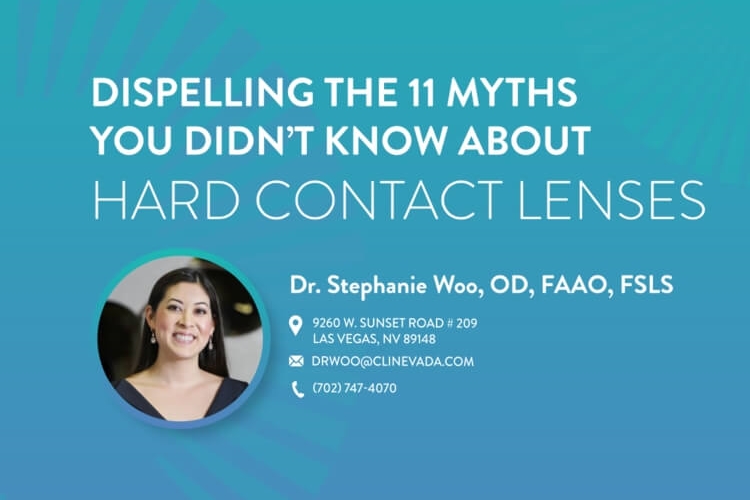Scleral contact lenses are large, rigid contact lenses that vault over the cornea and rest on the white of the eye. One common concern for patients considering this type of contact lens is whether or not the contact lens will be comfortable. Fortunately, a scleral contact lens that is properly fit and position will be extremely comfortable and should not cause any irritation or sensation of something rubbing within the eye. However, if a scleral contact lens is causing discomfort, there may be a problem with how the lens is fitting on the eye and it should be evaluated by the doctor.
How a Scleral Contact Lens Works
Unlike the more common “soft” contact lenses which are flimsy and do not hold their shape, a scleral contact lens is rigid and will not conform to the eye.
Since the scleral lens does not alter its shape, when it is placed on the eye it must be fitted properly so that the edges of the contact lens hit the correct spot on the eye.
A scleral contact lens is designed to rest on the white of the eye gently and just outside of the limbus which is the area where the cornea and sclera meet.
A good-fitting scleral contact lens will not push down on the eye but will fit with good alignment to allow tears beneath the scleral contact lens without moving the contact lens.
The tears will flow beneath the contact lens to provide moisture and nutrients to the front of the eye and maintain the tear film over the cornea.
What Does Dr. Woo Think About Scleral Lens Discomfort?
Edge lift with scleral lenses can be hard to see. Even after seeing thousands of scleral lens patients, it is still difficult for me to spot it sometimes.
Edge lift occurs when the edge of the scleral lens is too flat, resulting in the edge lifting off the eye. An analogy would be like putting a paper plate onto a basketball.
The edge of the plate will lift off because the shape does not match the contours of the basketball. In this video, you can see that there is a small shadow at the edge of the scleral lens in the temporal area.
This very small shadow is hard to identify, but we were lucky to catch it today. With the OCT image, you can see the edge of the lens is slightly lifted off of the conjunctiva, which was resulting in the shadow that we see in the slit lamp.
When edge lift is present, patients often complain that their lens is uncomfortable. If the edge lift is excessive you will see the lens actually move when they blink and the patient will state discomfort.
You might also see a bubble come into the lens if the edge lift is severe enough. Luckily, edge lift is very easy to fix.
By simple steeping the edge in the affected area, you can resolve this issue.
Contact the lab to help, they will know what to do!
Why Scleral Contact Lenses Help Prevent Dryness
A common reason that other types of contact lenses are uncomfortable is that the eye becomes too dry and irritated while wearing the contact lenses.
If the contact lenses are soft and mold their shape to the cornea, it prevents the tears from reaching the front of the eye and moisturizes the cornea.
On the other hand, a scleral contact lens does not impede this tear flow but instead enhances it and makes the front of the eye very comfortable, and prevents dryness.
Causes of Discomfort with Scleral Contact Lenses
Since dry eyes or dryness is not a concern for discomfort with scleral contact lenses, the leading cause of discomfort with scleral contact lenses is a poor fit on the edge of the lens.
When the edge of the scleral contact lens is not fit properly, either across the entire eye or in one area, it can cause a sensation of pain or irritation.
For a scleral contact lens to sit comfortably on the eye, there cannot be any abnormalities on the sclera that would interfere with the edge of the scleral contact lens.
Things such as pingueculas, pterygiums, cysts, surgical blebs, or other raised areas can impact how the scleral contact lens fits.
If there is a raised area present, then the scleral contact lens must be made to accommodate that area and vault over the raised area or sit higher in that region.
If there is any discomfort remaining, it should be evaluated by the eye doctor to determine if the scleral contact lens is still fitting properly.


